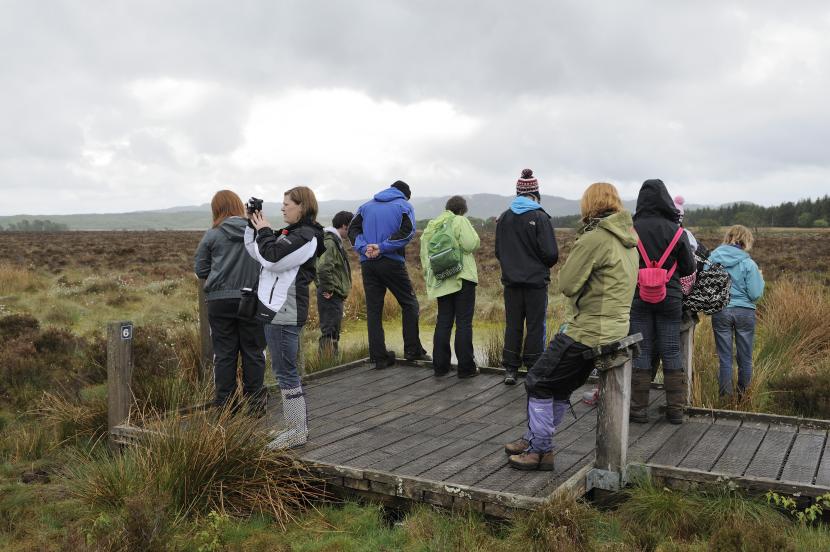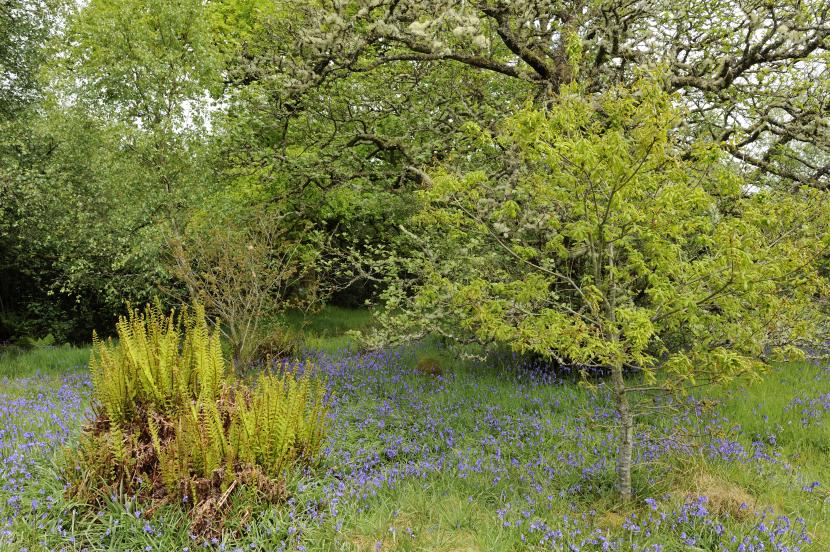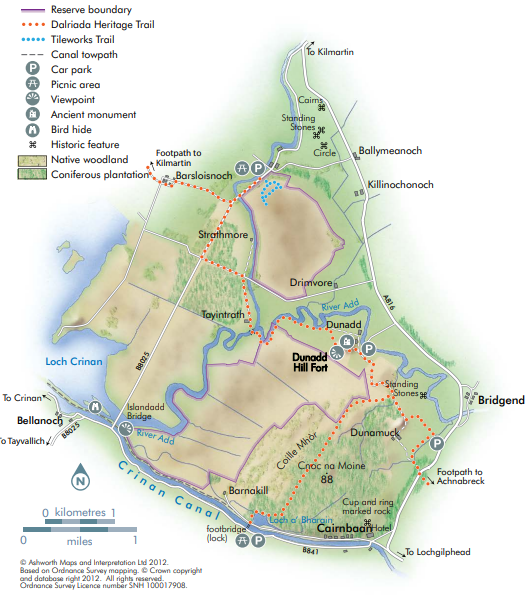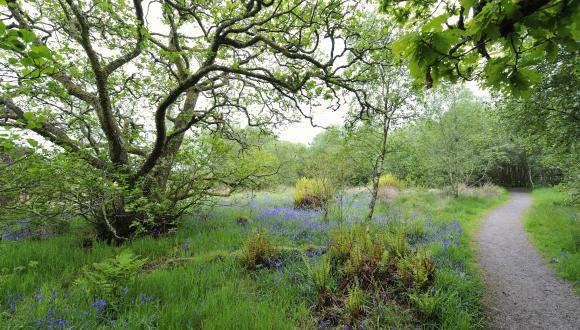Moine Mhòr NNR - visiting the reserve leaflet
Welcome to Moine Mhòr National Nature Reserve
The Great Moss
This is one of Scotland’s oldest landscapes, with 5000 years of history locked in its layers of peat. From any viewpoint you’ll see how the surface of the bog has formed a huge, shallow dome. Moine Mhòr is also one of the few landscapes in Britain which takes in saltmarsh, peat bog, woodland and hillside.
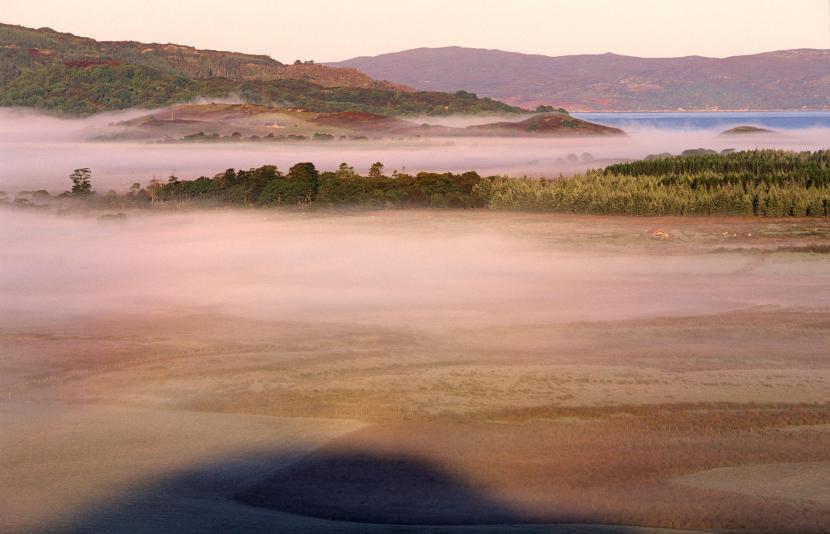
A watery grave
Plants in peat bogs don’t rot away. Bacteria that help the decaying process can’t survive such acidic conditions. Peat slowly forms from the squashed remains of dead plants.
A peat bog is nine-tenths water. Sphagnum moss on the surface soaks it up like a sponge, slowing the rate at which stored rainwater is released. Left undisturbed, peat bogs help curb climate change by storing carbon dioxide for thousands of years.
A carpet of colour
Moine Mhòr is like a richly coloured carpet, especially in autumn when sphagnum mosses and grasses turn gold, russet and brown. Bog asphodel, heather, cotton grasses and sedges add splashes of yellow, purple, green and white. Tickle another of your senses by rubbing a bog myrtle leaf in your fingers.
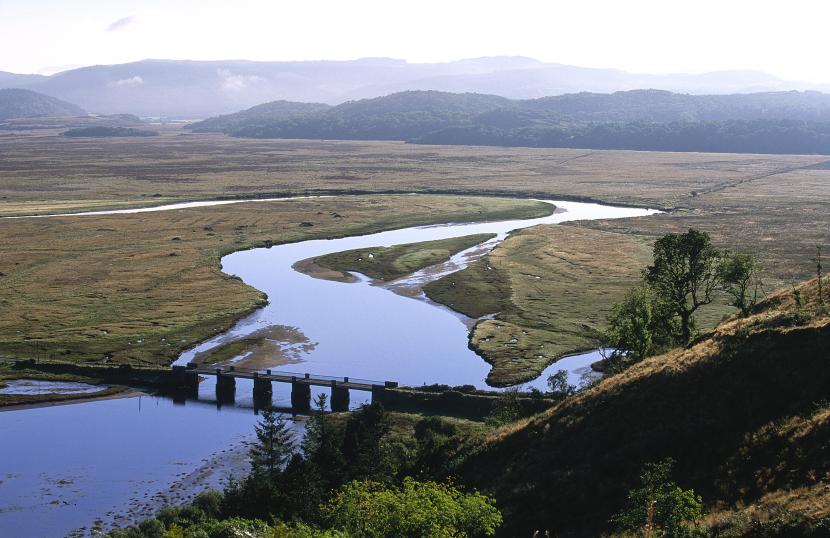
Squelching with life
Listen for the haunting call of the curlew and the chatter of whinchats, stonechats, pipits and warblers in spring. Hen harriers hunt on the Moss and roost in winter. Look for roe deer tracks and antler rubbings on young trees. You might even glimpse an otter near the River Add.
In summer ten kinds of dragonfly search for insects and lay their eggs in bog pools. Caterpillars, including the rare large heath and Scotch argus butterflies, feed on bog plants. Some insects provide food for sundew plants which trap insects in their sticky leaf hairs.
Getting there
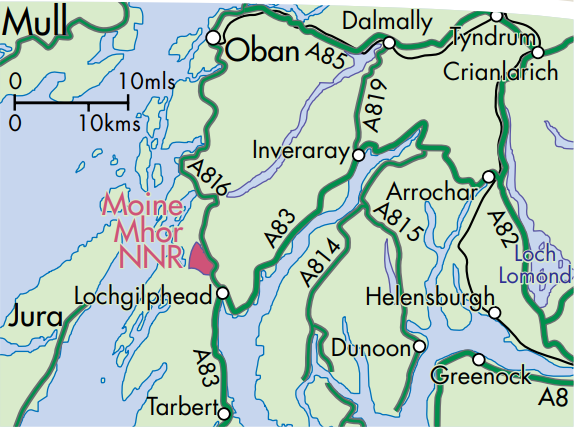
For more information:
NatureScot
1 Kilmory Industrial Estate
Lochgilphead
Argyll
PA31 8RR

Footprints in the bog
The first Neolithic farmers created their stone circles, rock carvings and burial chambers in Kilmartin Glen around 5000 years ago. As the climate became cooler and wetter about 2000 years ago, the Moine Mhòr began to expand and ancient monuments were partially covered with peat. Too marshy to farm, peat was cut from the Moss for fuel and bog plants provided the ingredients for dyes, food, medicines, honey and heather ales.
Moine Mhòr lay undisturbed until the 19th century when the Poltalloch estate drained much of it for farming. Peat fuelled the tile works which made drainage pipes and bricks for the new estate village of Kilmartin. Burning heather encouraged new growth which in turn attracted grouse and shooting parties. Now nature is reclaiming the Moss.
Rising damp
When the last Ice Age ended 10,000 years ago, rising sea levels covered Kilmartin Glen in marine clay. Then, released from the weight of glaciers, the land bounced back creating a shallow estuary at the mouth of the river Add. Coastal saltmarsh spread while a freshwater loch formed inland. Gradually layers of peat filled the loch. Five thousand years later, the peat is around four metres deep and still growing at the rate of a millimetre a year.
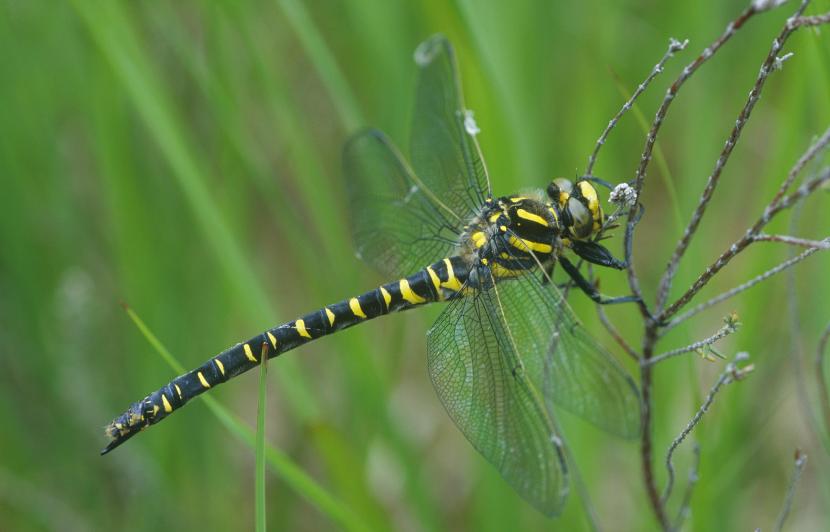
Putting back the clock
A National Nature Reserve since 1987, the Great Moss is becoming great again. We have dammed drainage channels and restored the peat by allowing water levels to rise and sphagnum moss to grow again. The land has been cleared of rhododendron, birch scrub and conifers.
Cattle and sheep graze part of the Moss. This encourages different plants and insects including the important marsh fritillary butterfly as well as breeding and wintering birds.
Need to know
- For the best views of bogland and estuary and great bird watching all year round, climb Dunadd Hill or take the canal towpath at Bellanoch.
- Pick up a leaflet at the car park and picnic area for the Tileworks Trail.
- Take warm, waterproof clothes and good footwear as the weather can change quickly.
- We suggest keeping to the main paths as the bog has hidden holes and deep, flooded drains.
Find out more on
- Visiting the reserve
- About the reserve
- Visit more of our nature reserves
Reserve map
Trails
Tileworks Trail
This short trail through native woodland takes you to a viewing point where you step out on to a boardwalk above one of Scotland’s oldest landscapes - over 5000 years of history are locked into the peat.
